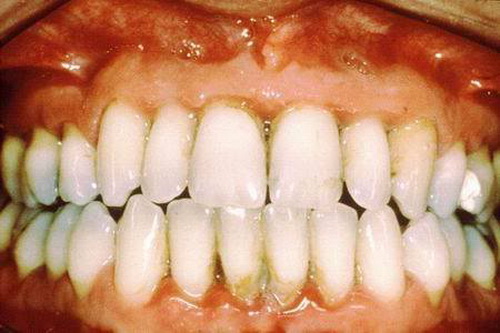
What is gingivitis?
If the teeth are not brushed and flossed regularly, a layer of tartar and plaque tends to develop on them. This provides a fertile breeding ground for many bacteria. The infection of gums because of these bacteria is called as gingivitis. The gums become swollen and inflamed and bleed easily on brushing. Gingivitis is however, an early form of gum infection wherein the teeth remain firmly set in their sockets. It is a reversible condition which cures on its own if good oral hygiene is maintained. However, if the oral hygiene is not improved and it is left untreated, gingivitis may lead to periodontitis, a more serious form of infection of gums which may lead to falling teeth.
- Important notification about information and brand names used in this slideshow!
- Photo courtesy of jozipper by Photobucket : media.photobucket.com/user/jozipper/media/gingivitis2.jpg.html?filters[term]=gingivitis&filters[primary]=images&filters[secondary]=videos&sort=1&o=6
- www.webmd.com/oral-health/guide/gingivitis-periodontal-disease
- http://www.emedicinehealth.com/gingivitis/article_em.htm
- http://www.nidcr.nih.gov/OralHealth/Topics/GumDiseases/PeriodontalGumDisease.htm
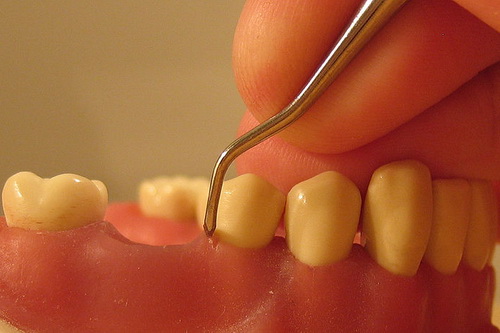
Difference between gingivitis and periodontitis
In gingivitis, even though the gums are inflamed, the attachment of the teeth to their sockets remains intact. However, when gingivitis is not treated and it leads to periodontitis, the teeth also become affected. The inner layer of the gums and the bone are pulled away from the teeth to form pockets. Debris tends to collect in these pockets and attracts bacteria. Immune cells from the body also accumulate here to fight off the bacteria. Both the bacteria and the immune cells release chemicals which further dissolve the connective tissue between the gums and the teeth. The pocket becomes deeper inviting more and more bacteria while loosening the grip of the gums over the teeth. The teeth become loose and may ultimately fall off.
- Important notification about information and brand names used in this slideshow!
- Photo courtesy of R. Engelhardt by Wikimedia Commons : en.wikipedia.org/wiki/File:Posterior_scaler_on_teeth.jpg
- www.webmd.com/oral-health/guide/gingivitis-periodontal-disease
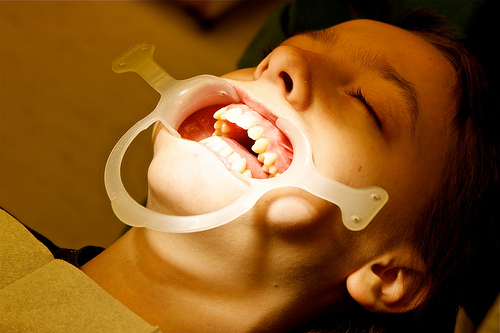
Causes for gingivitis
The main causes of gingivitis are as follows: • Poor oral hygiene • Uncontrolled blood sugar because of diabetes • Certain systemic diseases like cancer and HIV, and infections affecting the whole of the body • Hormonal changes related to pregnancy. These hormones increase the sensitivity of the gums. • Hormonal changes observed during puberty and early adulthood. • Misaligned teeth and use of unclean dental appliances like braces, plates and dentures can increase the chances of infection. • Medicines like birth control pills, phenytoin, dilantin and bismuth increase the risk of gingivitis. • Habits like smoking • A positive family history of dental diseases can also be a cause behind gingivitis.
- Important notification about information and brand names used in this slideshow!
- Photo courtesy of Zdenko Zivkovic by Flickr : www.flickr.com/photos/zivkovic/6837594169/
- www.ncbi.nlm.nih.gov/pubmedhealth/PMH0002051/

Symptoms of gingivitis
As gingivitis is rarely painful, it may often go unnoticed till late. Some of the common signs and symptoms of the disease include: • Swelling of gums • Gums become puffy and soft • Receding gums which make the teeth appear longer • Sometimes, the gums become tender • The gums tend to bleed easily up on brushing or flossing If the gingivitis is not treated and advances to periodontitis or gum disease, the symptoms may include: • Persistent bad breath or halitosis • Increased teeth sensitivity • Pain while chewing • Deep pockets are formed between the teeth and the gums • Loose, shifting or falling teeth • Changes in the fitting of partial dentures or the way the upper and lower teeth align while biting

Risk factors for gingivitis
Although gingivitis is a condition that can affect anybody at any age, there are certain factors which increase the risk of developing the disease. The risk factors for developing gingivitis include: • Poor oral hygiene • Smoking or chewing tobacco • Systemic diseases like uncontrolled diabetes, cancer, leukemia and HIV • Increasing age • Hormonal changes in body either during puberty or during pregnancy. The condition may also appear as a result of hormonal changes observed during the menstrual cycle. • Poor nutrition • Ill-fitting dentures and other causes which may lead to misalignment of teeth • Viral and fungal infections of the mouth • Drug abuse • Certain medications like phenytoin, bismuth, birth control pills and dilantin • Dry mouth
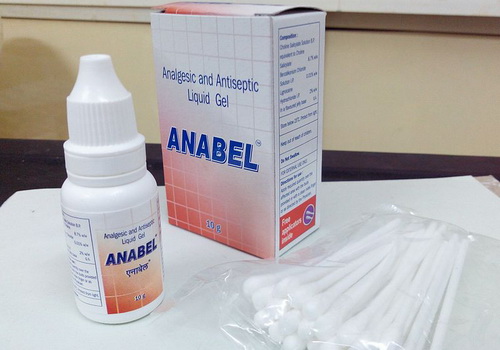
Medications for gingivitis
Apart from cleaning the teeth using surgical techniques, certain medications have also been used to treat gingivitis. The different medications used in the treatment include: • Antimicrobial mouth rinse: These mouth rinses contain chlorhexidine and can be used to check the growth of bacteria. • Antiseptic chip: These chips contain antiseptics covered in a gelatin coat. They are placed inside the pockets between the gums and the teeth wherein they gradually release the medicine. • Antibiotic gels: They contain doxycycline and are placed in the gum pockets. The antibiotic is released over a course of seven days and kills any bacteria that may be present in the pockets. • Antibiotic microspheres: They work like antibiotic gels but contain minocycline instead of doxycycline. • Enzyme suppressants: They are oral pills containing low doses of doxycycline. They act against the enzymes released by the bacteria present in the gum pockets which gradually destroy the connective tissue and lead to loosening of teeth. • Oral antibiotics: They are prescribed for a short term to take care of any oral infection.
- Important notification about information and brand names used in this slideshow!
- Photo courtesy of Nizil Shah by Wikimedia Commons : en.wikipedia.org/wiki/File:Gum_paint.jpg
- www.nidcr.nih.gov/OralHealth/Topics/GumDiseases/PeriodontalGumDisease.htm

How is gingivitis treated?
If the treatment of gingivitis is initiated at the earliest, the disease is often reversible. It can be prevented from progressing into the more severe periodontitis. The treatment of gingivitis included a visit to the dentist followed by a thorough brushing, cleaning and flossing regime at home. The main aim of treatment for gingivitis is to avoid infection of the gums. Removing all traces of tartar and plaque from the teeth and then maintaining the oral hygiene insures that there is no scope of infection inside the mouth. Apart from cleaning the oral cavity, the patient is encouraged to give up on smoking and chewing of tobacco. If the patient is suffering from diabetes, his blood sugar is brought under control. Similarly, treatment of any other systemic cause of gingivitis can also help in curing the disease. If gingivitis is deep seated, medications and surgical techniques can also be used by the dentist.
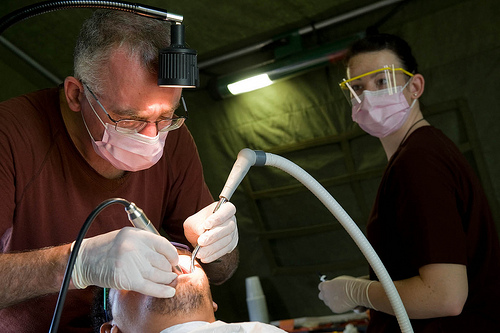
Surgery for gingivitis
Surgery is usually carried out in those cases wherein the gingivitis has progressed to periodontitis. The various surgical techniques include: • Flap surgery: This is carried out if some amount of tartar still remains in the pocket despite cleaning and medications. The dentist lifts back a flap of gums, cleans the pocket thoroughly and then re-sutures the flap back so that the gum snugly holds the tooth and no pocket remains. • Bone and tissue grafts: Bone grafting is done to regenerate any bone that may be lost due to periodontitis. A natural or synthetic bone graft is placed which promotes bone growth. Soft tissue graft is used when gum tissue has been lost. It promotes growth of gum tissue to cover the exposed roots of the teeth.
- Important notification about information and brand names used in this slideshow!
- Photo courtesy of New Zealand Defence Force by Flickr : www.flickr.com/photos/nzdefenceforce/7947208910/
- www.nidcr.nih.gov/OralHealth/Topics/GumDiseases/PeriodontalGumDisease.htm
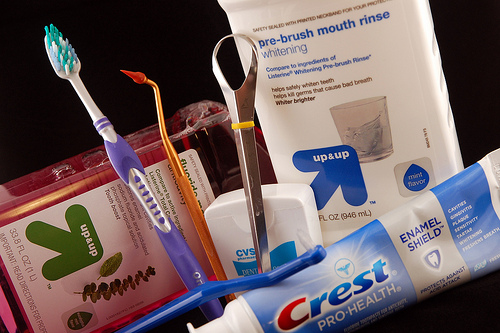
Can gingivitis be prevented?
Gingivitis can be prevented by maintaining a good oral hygiene. One should brush his teeth twice using fluoride toothpaste. Flossing is important to remove any tartar formation between two teeth. The importance of a regular dental check-up cannot be overemphasized. Besides these, on should try to give up on bad habits like smoking. Smokers are seven times more likely to suffer from diseases of the gum and smoking is also known to reduce the efficacy of the medications used to treat gingivitis. One should strive to get rid of any stress as stress is known to lower the body’s immunity and give rise to infections. A healthy diet improves the immune system of the body to fight off any infection. Also, one must avoid habits like clenching one’s teeth as that puts unnecessary pressure on the supporting tissue of the teeth and may damage them.

Prognosis and risk of other health problems
Removal of plaques can cause some discomfort. However, once the teeth have been cleaned and a good oral hygiene has been maintained, the swelling and bleeding of gums reduce within 1-2 weeks. However, if gingivitis is left untreated, besides giving rise to periodontitis, it may also be associated with other health problems. Studies carried out on the type of bacteria present in dental plaque and those involved in heart disease show that there is a definite co-relation between them. However, scientists have not been able to establish a cause-effect relationship between the two as yet. However, they recommend striving for disease free gums for a healthier life. Other studies have also linked gingivitis with increased risk of stroke.


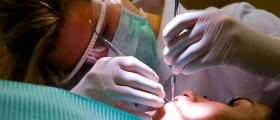

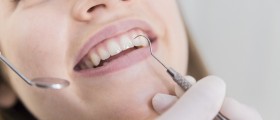
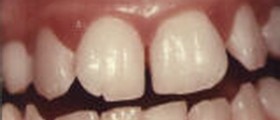


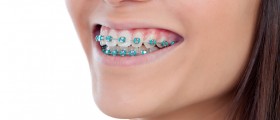

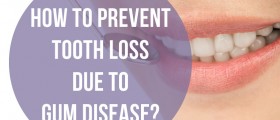
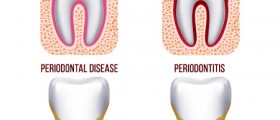

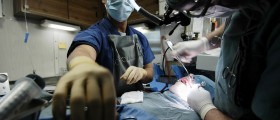

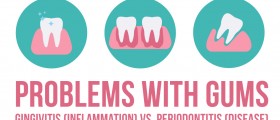

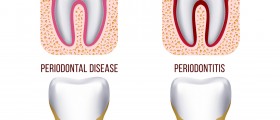
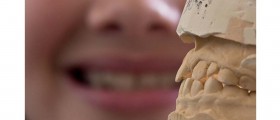
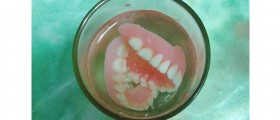
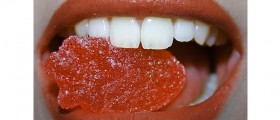
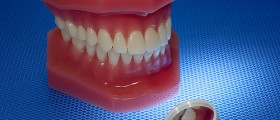
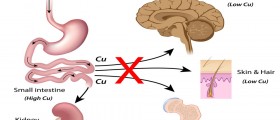
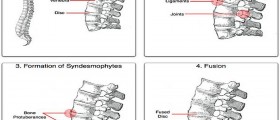



Your thoughts on this
Loading...